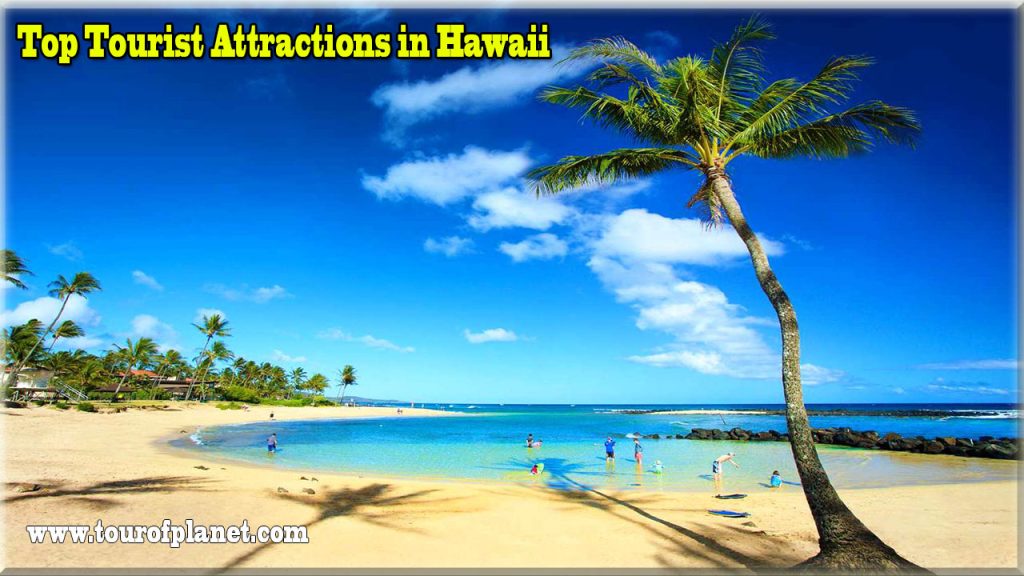Introduction:
Welcome to the Aloha State, where turquoise waters, lush green landscapes, and vibrant culture make Hawaii a paradise destination. Among the many questions that travelers often ask when planning a trip to Hawaii is, “What is the weather like in March?” In this comprehensive guide, we will delve into the climate and weather conditions in Hawaii during March, providing you with valuable insights and tips to make the most of your springtime vacation. From exploring the diverse islands to engaging in thrilling outdoor activities, understanding the Hawaii weather in March will help you plan an unforgettable experience.
Section 1: Overview of Hawaii’s Weather
Hawaii is located in the central Pacific Ocean and boasts a unique tropical climate. The state is characterized by two main seasons: the dry season (Kau) from April to October and the wet season (Hooilo) from November to March. March marks the transition from the wet season to the dry season, making it an enticing time to visit.
Section 2: Temperature in March
During March, Hawaii experiences mild temperatures, providing a comfortable atmosphere for travelers. The average daytime temperature hovers around 78°F (25°C) in coastal areas, while higher elevations may be cooler, ranging from 70°F to 75°F (21°C to 24°C). In the evenings, the temperature slightly drops, offering a pleasant ambiance for leisurely strolls along the beach or dining al fresco.
Section 3: Precipitation and Rainfall
As Hawaii emerges from the wet season, March still witnesses some rainfall, especially during the first half of the month. However, the rainfall is generally less frequent and intense compared to the peak of the wet season in December and January. The northern and eastern parts of the islands typically receive more rainfall, while the southern and western regions tend to be drier. It is advisable to bring a light rain jacket or umbrella during your March visit to be prepared for any occasional showers.
Section 4: Wind Patterns
March brings noticeable changes in wind patterns across Hawaii. The trade winds, which play a significant role in the islands’ climate, start to strengthen during this time. These refreshing trade winds have a cooling effect, making the coastal areas particularly enjoyable for outdoor activities such as surfing, snorkeling, and hiking.
Section 5: Sunshine and Daylight Hours
One of the major attractions of visiting Hawaii in March is the increase in sunshine and longer daylight hours. As the wet season recedes, you can expect more sunny days, perfect for beach outings and soaking up the Hawaiian sun. The average daily sunshine hours increase to around 9 hours in March, giving you ample time to explore the stunning landscapes and partake in various island adventures.
Section 6: Ocean Temperatures
Hawaii’s crystal-clear waters are ideal for swimming, snorkeling, and diving. In March, the ocean temperatures begin to warm up from the cooler months of January and February, ranging from 74°F to 77°F (23°C to 25°C). This makes the ocean conditions welcoming and comfortable for water activities, allowing you to witness the vibrant marine life and coral reefs up close.
Section 7: Best Islands to Visit in March
Each Hawaiian island has its charm and unique attractions, and the weather in March influences the experiences they offer. Here, we explore the best islands to visit during this time:
7.1. Oahu: Oahu, the gathering place, is home to the bustling city of Honolulu and the famous Waikiki Beach. In March, Oahu experiences pleasant temperatures, making it a perfect destination for urban exploration, historical sites, and beach relaxation.
7.2. Maui: Known as the Valley Isle, Maui boasts diverse landscapes, including Haleakalā National Park and the famous Road to Hana. March is an excellent time to visit Maui, as the island transitions into the dry season, making outdoor activities delightful.
7.3. Kauai: The Garden Isle is renowned for its lush rainforests and breathtaking waterfalls. March offers a balance of rainfall and sunshine, enhancing the island’s verdant beauty and providing opportunities for exciting hikes and sightseeing.
7.4. Big Island (Hawaii Island): As the largest and most diverse island, the Big Island offers everything from volcanic landscapes to black sand beaches. March offers pleasant weather for exploring the Hawaii Volcanoes National Park and enjoying the island’s natural wonders.
Section 8: Packing Tips for March Travel
To make the most of your Hawaiian vacation in March, here are some essential packing tips:
- 8.1. Light and breathable clothing: Pack lightweight and breathable clothing to stay comfortable during the warm days and cooler nights.
- 8.2. Sun protection: Don’t forget to bring sunscreen, sunglasses, and a wide-brimmed hat to shield yourself from the sun’s rays.
- 8.3. Water-resistant gear: As March still sees some rainfall, consider packing a water-resistant jacket, umbrella, and waterproof bags to protect your belongings.
- 8.4. Swimsuits and beachwear: With ocean temperatures rising, be sure to pack swimsuits and beachwear for a memorable beach experience.
Conclusion
March is an enticing time to visit Hawaii, as the islands transition from the wet season to the dry season. The pleasant temperatures, increased sunshine, and warming ocean waters create an ideal setting for a memorable vacation. Whether you choose to explore the urban attractions of Oahu or the natural wonders of Maui, Kauai, or the Big Island, Hawaii in March offers a perfect blend of adventure and relaxation. By understanding the unique weather conditions during this time, you can plan your itinerary and make the most of your Hawaiian getaway. Embrace the Aloha spirit and get ready for an unforgettable journey to one of the world’s most captivating destinations.


